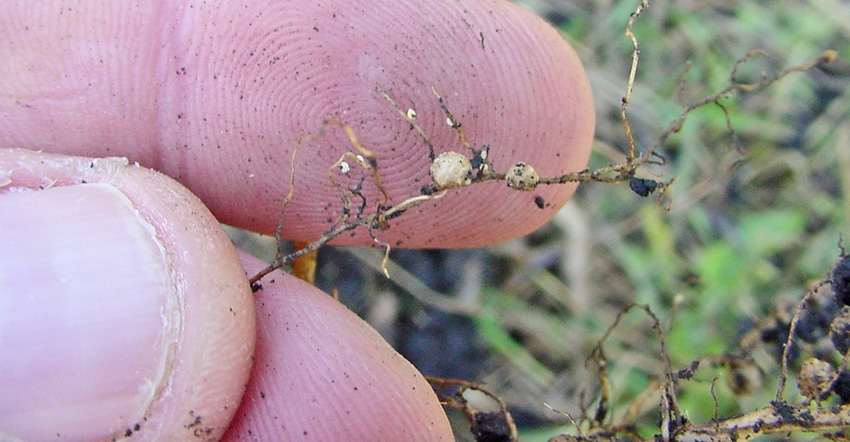
Your soybean field soil sample results are in, and the most devastating and yield-robbing pest in the U.S. is now in your field — soybean cyst nematodes.
Syngenta agronomist Brett Craigmyle says don't panic — there are good management options for farmers dealing with SCN heading into 2018. For those soil samples showing 2,000 eggs or more, expect some yield loss.
Actually, Craigmyle says that farmers should take action at the first detection of SCN. Here are his four best options to control SCN:
• Seed treatment. Seed treatments that offer effective protection against SCN can be a valuable tool, Craigmyle says. Clariva Complete Beans, a combination of separately registered products, is lethal to SCN for the entire growing season. It helps manage damage from SCN-related diseases like sudden death syndrome. Syngenta's seed treatment incorporates three fungicides, an insecticide and a nematicide. Craigmyle says the insecticide provides protection against early-season insect pressure, allowing the plant to get up and grow quickly. The nematicide holds up under all weather conditions, providing season-long protection against SCN. Compared to an insecticide-fungicide seed treatment alone, Clariva Complete Beans has shown an average yield increase of 2.7 bushels per acre on top of CruiserMaxx Beans with Vibrance.
• Weed control. If growers are considering planting back to beans, they need to make sure to manage fall weeds. "A number of fall weeds, like henbit and purple deadnettle, can serve as hosts for SCN," Craigmyle says. The SCN infects the roots in the fall or early spring and can ramp up reproduction ahead of soybean planting. He says farmers should make fall weed control a priority by using a herbicide.
• Resistant varieties. Craigmyle says selecting SCN-resistant soybean varieties is an option; however, it comes with a problem. According to research by Greg Tylka, an Iowa State University nematologist, the genetic source PI88788 found in more than 95% of SCN-resistant varieties is losing efficacy. Craigmyle says resistant varieties are tools to fight SCN, but are not the only management option — and growers should incorporate other strategies.
• Nonhost crop rotation. If soil samples contain more than 10,000 eggs, consider introducing wheat or another nonhost crop, such as corn or alfalfa, into your rotation. "Rotating soybeans to corn can drop SCN populations by 60% in a year," Craigmyle says. He warns to be careful of some cover crops as they can be alternative hosts for SCN.
About the Author(s)
You May Also Like






